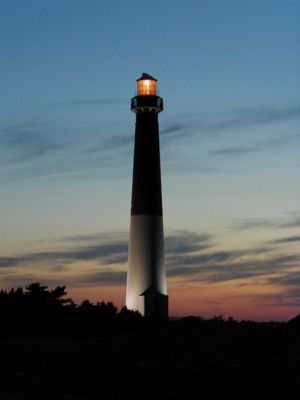Lighthouse
 From Conservapedia
From Conservapedia A Lighthouse is a structure, built on or near a shore, which displays a light of distinct properties to serve as an aid to navigation, and guide ships to port entries or harbors. Smaller lights may be displayed from fixed structures called beacons, from floating buoys or lightships.
The meanings of the light color or pattern of blinking displayed by lighthouses are given in light lists available to mariners and, in abbreviated form, on navigation charts. Some lights have one or more sectors in which the light appears red, usually to warn of some danger in its area, such as rocks or shoals. In other sectors most lights are white.[1]
In the past most Lighthouses were maintained by "Light Keepers" whose responsibility was to keep the light lit during hours of darkness or storm. Lights were originally lit by wood, oil or coal fires. In the early 20th Century most were switched over to electric light and the need for Light Keepers diminished greatly. Today only a handful of Light Keepers exist.[2]
United States Lighthouse History[edit]
The 200th anniversary of the creation of the Lighthouse Service was celebrated in 1989. It as created in the ninth law enacted by the First Congress. That law required the federal government to assume responsibility for the nation's lighthouses. The Lighthouse Service became part of the Coast Guard in 1939.
The care of lighthouses falls under the Short-Range Aids to Navigation Program, one of four programs administered by the Office of Navigation. Aids to navigation are external references that help mariners determine the position of their vessel and choose a safe course. Short-range aids include buoys, beacons, lights, lighthouses, sound signals and ranges. Today, expensive and environmentally-hazardous batteries are being replaced by solar power and automated lighthouses.[3]
References[edit]
Categories: [Navigation]
↧ Download as ZWI file | Last modified: 03/10/2023 19:53:05 | 33 views
☰ Source: https://www.conservapedia.com/Lighthouse | License: CC BY-SA 3.0
 ZWI signed:
ZWI signed:

 KSF
KSF